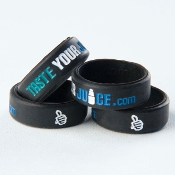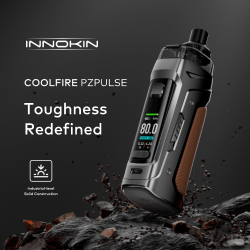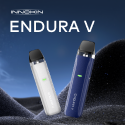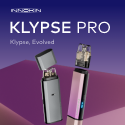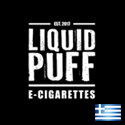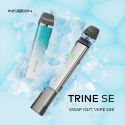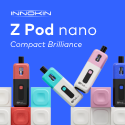I would like to personally welcome Battery Mooch to TasteYourJuice.com.
“Mooch” is well known in the industry as the “battery guy” and is quite popular on the ECF. I’ve worked with Mooch several times in the background and he’s always been quite helpful and knowledgeable in answering my questions.
Although I have some experience with battery testing, Mooch has all the experience I lack so I though it a good fit to offer him his own page here on TasteYourJuice.com.
If you look to the left, you’ll see the new Battery Mooch page under Information/Resources. His first article can be found there as well.
WELCOME MY FRIEND!
Who is Battery Mooch?
My name is John Muchow, some of you may know me as Mooch on ECF and FB and Mooch315
on ECR. I have been vaping since April, 2015 and haven’t smoked once since I
started!I was born and raised in New York City and still live there now. Since 1992 I have
been designing and building electronic devices for a large number of clients. My
first products were camera remote-control systems for sports photographers. As these
systems, and other devices, transitioned from wired to wireless the performance of
the batteries they used was very important as there was no way to replace them
during use. This led to me doing more and more battery testing and developing the
electronics to charge, test, and protect them.As battery technology advanced, from NiCd to NiMH to Li-Ion and now
ultracapacitor/Li-Ion hybrids, the devices I built and the battery testing I did
advanced along with them. I started specializing in power management electronics;
battery chargers, energy harvesters (for charging from heat, light, or
vibration/movement), power supplies, battery analyzers, electronic loads for battery
discharging, and battery management/protection systems. This is the work I still do
today.My clients have included the US Army, National Geographic, Sports Illustrated,
Eastman Kodak Company, and hundreds of other companies from large to small. Part of
the work I’ve done for a lot of my clients has been battery testing. Sometimes they
want to recommend a good battery to their customers. Other times they’re batteries I
have chosen to combine with my electronics to form a complete, protected power
source for them to incorporate into their products.Depending on my client’s requirements this testing can take up to several weeks to
complete. I use a subset of these tests when evaluating the batteries we use when
vaping. This includes continuous-current tests to establish the battery’s true (and
safe) ratings. They also help to determine if there’s any risk of venting if one of
our mods autofires or a mechanical mod’s button is accidentally pressed. The
pulse-current tests measure the degree of voltage sag we would see when vaping at
different current levels. Both types of tests are done the same way for every set of
batteries I test.This consistency in the testing allows for direct comparison of the performance of
different batteries even if the pulse discharging I do doesn’t match the way you
vape.Safety is my number one priority. While I often test at discharge current levels
that can result in unsafe battery temperatures, this is the only way to figure out
what a battery’s true and safe ratings are. No battery is totally safe but we can
certainly avoid taking unnecessary risks.My blog at ECF has the results of all my testing and a few articles on batteries,
battery safety, etc.:https://www.e-cigarette-forum.com/forum/blogs/mooch.256958/
I have also listed the equipment I use and the steps I follow when testing. This
allows anyone to replicate my tests if they want to:https://www.e-cigarette-forum.com/forum/blog-entry/my-cell-testing-equipment-and-setup.7431/
https://www.e-cigarette-forum.com/forum/blog-entry/whats-done-for-each-cell-test.7433/
My battery test results offer you a resource you can use when choosing a battery
that will not only be safer for the way you vape but will also give you great
performance.I’m looking forward to contributing to TasteYourJuice.com and I want to thank
PBusardo for the opportunity to help spread the word on exaggerated battery ratings
and battery safety!Mooch
Latest Battery Updates
A BATTERY MOOCH POST: AWT 40A 4200mAh 20700…preposterously overrated, false performance data, DO NOT BUY
This cell has only one rating on the wrap, “40A”. Simply put, that is ridiculous.
That, and other things, has forced me to issue my first ever DO NOT BUY recommendation. The biggest problem is that this appears to be a rewrap of the Sanyo 15A-16A 4000mAh NCR20700B cell that AWT decided to grossly exaggerate the current rating for. The capacity rating is exaggerated too. This cell is identical in appearance and essentially identical in performance to the Sanyo NCR20700B.
Aweite (AWT) doesn’t appear to have a web site but this cell is on their Alibaba pages. Earlier I found a page that referred to the Sanyo NCR20700B in the description for this cell and issued a warning (https://www.facebook.com/batterymooch/posts/1899722450317332).
The various Alibaba pages for this cell (https://imgur.com/a/voBPg) have ratings from 25A to 40A using the terms “max cont. discharge rate”, “fast discharging current”, “max discharging current”, or no description of what the “40A” number means at all. I guess you get to pick the rating that fits your mood! But at only 25A continuous this cell got hot enough to boil water, 101°C.
One Alibaba page claims the following…
– A tested capacity of 4150mA at 35A. That’s false. The cell only reached about 2500mAh, its temperature rose to 116°C, and it failed. Probably due to one of Sanyo’s internal protection devices being activated due to the dangerously high temperature.
– A battery temperature of 37°C for a 10A discharge. That’s false. The temperature rises to about 60°C at 10A (down to its rated 2.5V cutoff).
– A rating of 15C. That’s false and is lousy math too. Their claimed 4200mAh capacity and 25A/40A ratings would mean it’s a 6C/9.5C cell…if those current and capacity ratings were accurate. They’re not though. This is a 4C cell.
Another Alibaba page gave it a rating of 0.2C to 2C, which is just beyond silly and obviously an error they didn’t feel the need to correct.
I am giving this AWT a rating of 15A and 4000mAh.
I am also giving this AWT cell a DO NOT BUY recommendation due to the outrageous overrating and false performance data on Alibaba. If you need an ultra-high capacity 20700 cell for low to moderate power vaping at up to 10A/37W per cell then get the Sanyo NCR20700B.
The two cells that were tested were purchased by me from ebay’s r-lsales.
Some of AWT’s Alibaba pages for this battery: https://imgur.com/a/voBPg
Test results, discharge graph, photos: https://www.e-cigarette-forum.com/forum/threads/bench-test-results-awt-40a-4200mah-20700…preposterously-overrated-false-performance-data-do-not-b.812261/
All my test results to date: https://www.e-cigarette-forum.com/forum/blog-entrty/list-of-battery-tests.7436/
A BATTERY MOOCH POST: The battery rewrappers and manufacturers have spoken!
Well…actually…no they haven’t. Not in the way we would have liked.
Recently I posted an open letter to these companies asking them to join me in creating a battery pulse rating standard they could all use. Right now the lack of a standard for pulse length, time between pulses, and the criteria used to set the rating makes any “pulse” or “max” rating utterly useless. You can’t compare the “pulse” or “max” rating from one battery against another.
But not one battery rewrapper or manufacturer responded or showed interest in any way.
Unexpected? Perhaps not.
But very disappointing nonetheless.
I get it, these “pulse” ratings are what sell batteries. I was hoping though that with the uselessness of these ratings becoming more and more known that at least one company would see an opportunity to help set a standard. If for no other reason than it would help them stand out from their competition.
Some of our community’s battery testers and a couple of shops have offered to help out though. Thank you! We’ll see what we can do.
To all those companies who still insist on using worthless pulse ratings, you will be called out for it. All the more vehemently now too.
Mooch
A BATTERY MOOCH POST: Avoid using the Efest SODA charger at its 1A setting
I have seen a couple of mentions of overheating and failure with Efest SODA chargers so I decided to check into it.
I measured the external and internal temperatures of two SODA chargers at their 0.5A and 1A settings, charging two batteries at once. They were only about 3°C apart for any temperature reading so I averaged the two readings.
Ambient temperature = 27°C
Temperatures at 1A:
Top external = 71°C
Bottom external = 87°C
Internal = 108°C
Batteries = 53°C
Those charger and battery temperatures are too high!
The bottom was hot enough to be painful to touch and the internal temperature exceeded the 105°C rated max of the capacitors inside (see the photos). Those capacitors are quite temperature sensitive and shouldn’t be run at anywhere near their max rating to ensure a long life. That high of a temperature is also bad for every other component in the charger.
In addition, the batteries were being heated up above the 45°C (approximately) point where aging of the batteries starts accelerating. The measured temperature of 53°C is what I would call “very warm”.
In my opinion, this charger runs too hot at the 1A setting and could fail prematurely because of that. It will also heat your batteries up enough to possibly shorten their overall life some. I advise running the Efest SODA charger only at its 0.5A setting.
Charger temperatures at 0.5A:
Top external = 49°C
Bottom external = 55°C
Internal = 71°C
Batteries = 38°C
Running it at the 0.5A setting does not guarantee that nothing can go wrong!
I still recommend always charging on a non-flammable surface and staying nearby until charging is done. Then remove the batteries from the charger and store them in a non-conductive case or sleeve. Do not store your batteries in the charger!
Never put any charger in a LiPo battery charging bag!
Those bags are made to only hold the battery pack. Putting the charger and batteries in the bag traps all the heat from the charger inside and the temperatures can rise high enough to cause failure of the charger.
Images: https://imgur.com/a/DG90C
A BATTERY MOOCH POST: Bench Test Results: Efest 30A 3000mAh 20700…accurately rated, same cell as iJoy/Ampking
This cell has only one rating on the wrap, “Max continuous discharge = 30A” with a larger “30A” above that. I am delighted to say that the rating is accurate. It is also good to see that Efest took off the useless pulse rating that they originally had on an earlier version of the wrap.
I don’t know if they’ll carry this change in the way they rate their cells over to their 18650’s. I will be retesting all of the Efest 18650’s in a few weeks. We’ll see what happens.
This Efest appears to be the same cell as the iJoy and Ampking 20700’s. It uses a plastic top ring insulator though versus the paper insulator on the iJoy and Ampking. This might make a difference to those who often get e-liquid on the battery.
Three of the four Efest’s I tested didn’t perform quite as well as the iJoy/Ampking cells though. The Efest’s ran at a slightly lower voltage and with less capacity. The fourth Efest ran at a slightly lower voltage for a while but had the same capacity as the iJoy and Ampking.
I don’t know if the Efests were a slightly lower grade or if there are batch to batch differences for a particular grade of this cell. The differences in performance between these Efests and the iJoy/Ampking are minor though and I don’t think they will be noticeable in actual use.
This cell says “IMR 20700” on the wrap but I do not know if it actually uses the same lithium-manganese chemistry used by batteries from the big manufacturers with the IMR model number prefix.
I am rating this Efest at 30A and 3000mAh.
The four cells that were tested were donated by Efest (www.efestpower.com). Thank you!
Test results, discharge graph, photos: https://www.e-cigarette-forum.com/forum/threads/bench-test-results-efest-30a-3000mah-20700-accurately-rated-same-cell-as-ijoy-ampking.806303/
All my test results to date: https://www.e-cigarette-forum.com/forum/blog-entry/list-of-battery-tests.7436/
A BATTERY MOOCH POST: Never keep your batteries in a charger when traveling!
Whether it’s just to work or around the world, using a charger to store your batteries can lead to a fire or bursting of your battery if the wrap is damaged.
I feel this is what happened during a recent flight (photos from a CNN post). Two batteries, it appears, were being stored in an Efest SODA charger in a day pack during a flight. One of the batteries went into thermal runaway and caught fire. Luckily, everyone was ok.
Photos: https://imgur.com/a/mVYOy
What caused this?
It wasn’t because they were AWT batteries.
It wasn’t because the battery ignited on its own.
It wasn’t from being charged at the wrong rate.
It wasn’t from being used too hard.
Eagle-eyed vapers might notice that in the photos one of the two batteries is reversed. Could this be the cause?
No.
I tested this in a SODA charger at both charge rate settings and there were no problems.
But, like many chargers, if the wrap is damaged and the battery slips a bit out of position the positive contact of the charger can short-circuit the battery center positive contact to the negative outer ring at the top.
This can force the battery into thermal runaway leading to a fire or even violent bursting of the battery.
NEVER keep your batteries in the charger when traveling. Yes, it saves space. But it’s not worth the risk, especially when all the jostling could take an otherwise ok wrap and damage it.
ALWAYS store your batteries in a case, sleeve, or even a box and not in the charger.
ALWAYS keep your battery wraps and the insulator ring at the top of the battery in perfect condition.
A BATTERY MOOCH POST: Nitecore 40A 4200mAh 26650 Bench Test Results…useless pulse rating, performs same as others
This cell has multiple ratings on the wrap, making it quite confusing as to what its actual ratings are. These include “Discharge Current: 40A”, “DISCHARGE CURRENT: 21A/40A”, and “40A”.
I am assuming that 21A is the continuous current rating but it also has a 40A (pulse?) rating in multiple places on the wrap. This is unacceptable as that 40A rating cannot be used to compare this cell to any other. It is useless.
This Nitecore appears to be the same cell used for the Basen, Brillipower, HohmGrown 4200mAh-4500mAh cells and it performs like the others.
The wrap is not the standard heat shrink plastic. It is self-adhesive and appears to be similar to Mylar. I do not know how durable it is compared to the wraps being used now by other companies.
This cell says “IMR26650” and “High Drain Li-Mn” on the wrap but I do not know if it actually uses the same lithium-manganese chemistry used by batteries from the big manufacturers with the IMR model number prefix.
I am rating this Nitecore at 23A and 4200mAh.
The two cells that were tested were donated by IMRBatteries (www.imrbatteries.com). Thank you!
Test results, discharge graph, photos: https://www.e-cigarette-forum.com/forum/threads/nitecore-40a-4200mah-26650-bench-test-results-useless-pulse-rating-performs-same-as-others.805473/
All my test results to date: https://www.e-cigarette-forum.com/forum/blog-entry/list-of-battery-tests.7436/
A BATTERY MOOCH POST: No longer accepting “IMR” on a battery unless correct
This has gone on long enough. These companies should know better.
I will no longer be accepting a battery with “IMR” on the wrap as being accurately labeled unless it actually uses the battery chemistry that “IMR” is used for (by the big manufacturers).
The use of “IMR” on the batteries marketed to vapers is a big problem. The chemistry for that model number prefix is one of the safest available in Li-Ion batteries. There are a lot of older online articles for vapers saying that only IMR batteries should be used for vaping. This makes batteries with “IMR” on the wrap seem to be a safe choice.
One big problem though…I don’t think we use any batteries with that chemistry anymore.
Almost all the cylindrical batteries we use are “hybrid” chemistry batteries, i.e., the batteries that are using the “INR” model number prefix (or its equivalent) by the big manufacturers.
That makes me wonder if…
1 These Chinese battery manufacturers and rewrappers just use “IMR” as a way to make us think the battery is a safe chemistry to get us to buy the battery.
2 It’s just become a generic tag that means “non-LiPo”.
3 These Chinese battery manufacturers and rewrappers don’t know the difference between the different chemistries and actually think they are selling batteries that use the same chemistry as in batteries using the “IMR” model number prefix.
Whichever might be true, all of these scenarios are completely unacceptable. Especially in this environment of increased regulations and government scrutiny.
The use of “IMR” by the Chinese battery manufacturers and rewrappers is confusing and unnecessary. There is absolutely no reason to have “IMR” on any battery unless it uses the correct matching chemistry. I will be calling out the batteries from these Chinese companies that do not use “IMR” correctly. There was no good reason to ever use it and it’s time to stop.
My test reports from now on will reflect this.
Our community deserves accurate ratings and labeling. These companies have had years to get it right. Lets speak with our wallets and see what we can do.
Examples of “IMR” being used: https://imgur.com/a/d9dgZ
A BATTERY MOOCH POST: No longer accepting useless pulse ratings
I will no longer be saying a battery is accurately rated if the “pulse” rating is in huge numbers on the wrap, even if the accurate continuous current rating is also on the wrap in fine print.
This has been bothering me for a while but Nitecore has pushed me over the edge. While they have the continuous and (useless) pulse ratings spelled out it’s done in the tiniest of print while the pulse rating is repeated in huge numbers.
It’s clear to me that Nitecore, and other companies, want us to think that the pulse rating is the battery’s true rating. There are two problems with this…
1) Pulse ratings are utterly and completely useless unless we know some things about how the ratings were set. There are no standards for a pulse rating. Without knowing the length of the pulse, the time between pulses, and the criteria used to set the rating (temperature? run time? voltage sag? a combination of these?) we can’t compare one battery’s pulse rating against another’s. They’re useless.
2) These “pulse” ratings can be dangerously high. While you might normally be able to vape at that high a level without too much risk, since the current is pulsed, these ratings don’t take our safety into account in case of a mod malfunction or accidental button press. This can cause the battery to be discharged continuously, possibly causing it to vent (most likely not go into thermal runaway and burst though).
From now on whatever number is the most prominent one on the wrap will be the one I use as its claimed rating. This will be handled on a case by case basis and might need to be adjusted as a policy as testing continues.
Batteries that list both ratings equally, e.g., “20A/40A”, will have their useless pulse ratings mentioned but the first number will be considered as the continuous current rating.
This is not a perfect system and I’m sure it will need to be tweaked at some point but it’s a step that needed to be taken now due to the way these companies are presenting their ratings on the wrap.
Ratings examples: https://imgur.com/a/HqaCb
A BATTERY MOOCH POST: Westinghouse 2000mAh 18650 Bench Test Results…only a 7A battery
This Westinghouse is a 7A cell that does not match any Samsung, Sony, LG, or Panasonic/Sanyo cell I have seen. While many of us were pretty sure that it had a low current rating I was still receiving quite a few inquiries about it.
I am rating this Westinghouse at 7A and 2000mAh.
The two cells that were tested were purchased by me from Walmart.
Test results, discharge graph, photos: https://www.e-cigarette-forum.com/forum/threads/westinghouse-2000mah-18650-bench-test-results-only-a-7a-battery.804431/
All my test results to date: https://www.e-cigarette-forum.com/forum/blog-entry/list-of-battery-tests.7436/
A BATTERY MOOCH POST: Westinghouse 2000mAh 18650 Bench Test Results…only a 7A battery
This Westinghouse is a 7A cell that does not match any Samsung, Sony, LG, or Panasonic/Sanyo cell I have seen. While many of us were pretty sure that it had a low current rating I was still receiving quite a few inquiries about it.
I am rating this Westinghouse at 7A and 2000mAh.
To avoid a lot of voltage sag I recommend not going over 4A/15W but this a low capacity, low power cell and just isn’t a good choice for vaping.
The two cells that were tested were purchased by me from Walmart.
Test results, discharge graph, photos: https://www.e-cigarette-forum.com/forum/threads/westinghouse-2000mah-18650-bench-test-results-only-a-7a-battery.804431/
All my test results to date: https://www.e-cigarette-forum.com/forum/blog-entry/list-of-battery-tests.7436/




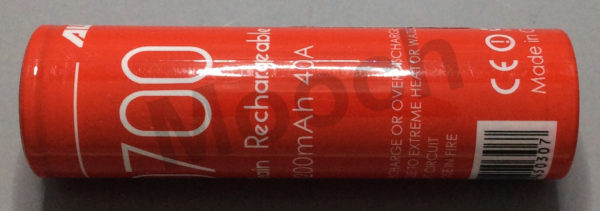
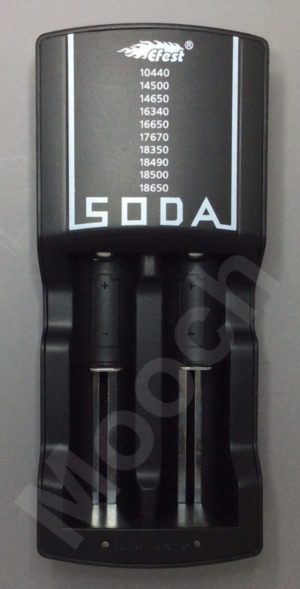
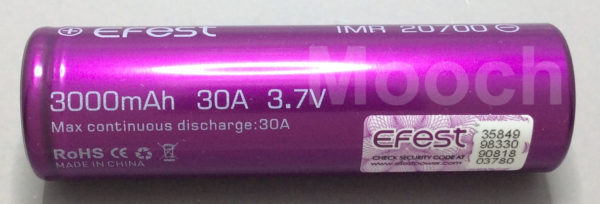
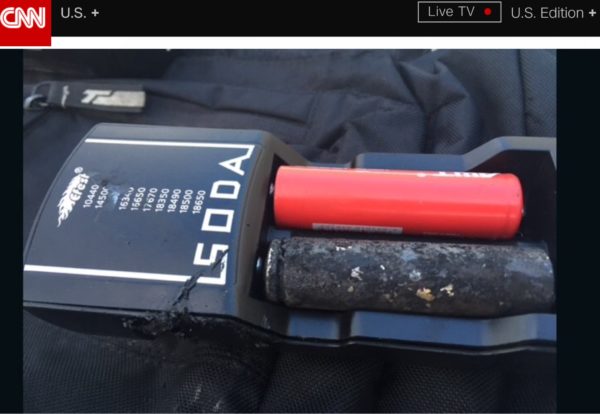
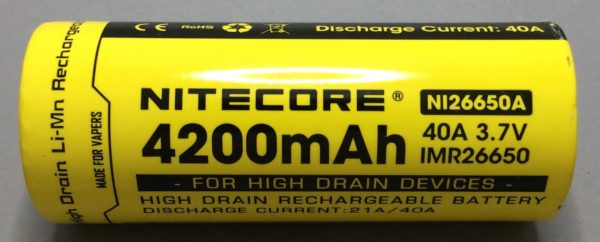




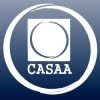





 Store
Store
